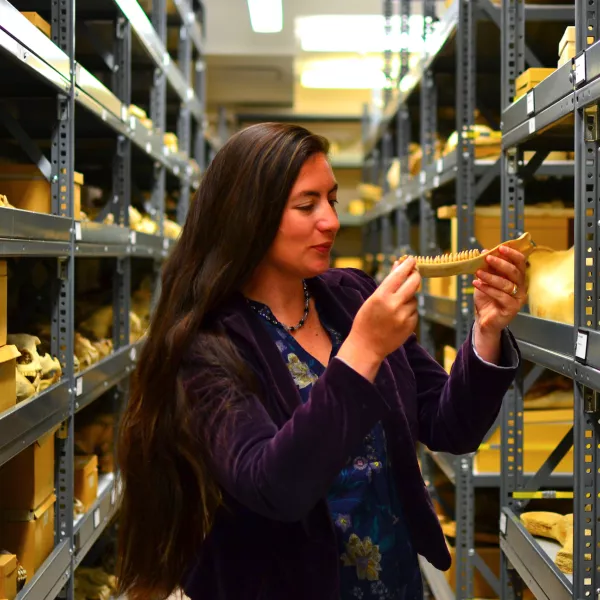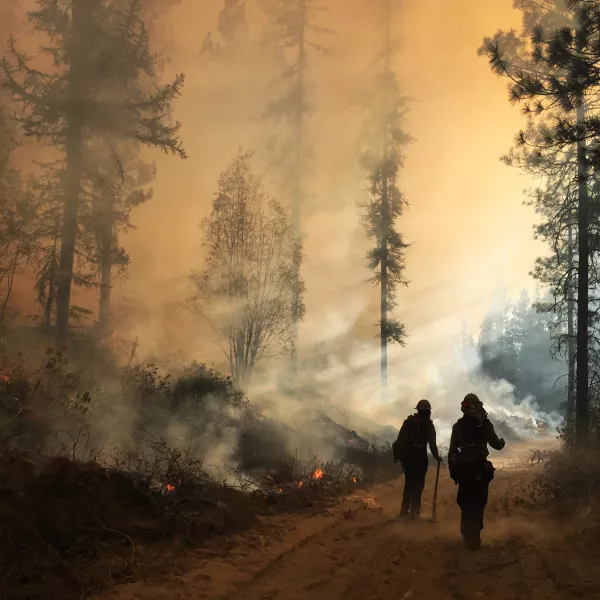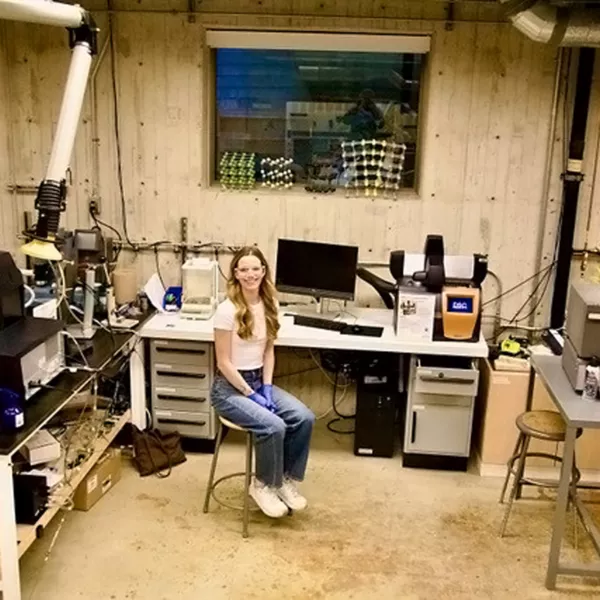About 2.5 million years ago, something important to all of us happened in East Africa’s Great Rift Valley.
That was when humankind’s ape-like ancestors, such as Australopithecus afarensis, began to evolve rapidly, and scientists think this evolutionary surge had everything to do with what they ate.
Their mouths, teeth and digestive tracts began to change in a way that reflected a new diet. And most importantly — crucially, in terms of human evolution — this new diet allowed their brains to grow, exponentially, in size, leading to huge changes in behavior and intelligence.
“The how and why of this happening remained unclear for years,” says Western’s Michael Medler, an associate professor of Environmental Studies. “And while all we can still do is hypothesize, the puzzle pieces are starting to come together.”
One of the prevailing theories about this evolutionary jumpstart is that somehow, some way, a group of hominins (the taxonomic catchall for early human ancestors) discovered cooked food — not only how to cook food, but that cooked food was better for them.
They were right — cooked food unlocks far more calories than raw food. Think about eating raw corn vs. cooked corn, for example. Cooked food is also simply far more efficient: It unlocks more calories, which means less time is needed for foraging, chewing, eating and digesting. And it means there’s more time for hunting and gathering (and thus, potentially, even more calories).
Cambridge-trained British anthropologist and primatologist Richard Wrangham, the Ruth B. Moore Professor of Biological Anthropology at Harvard University and the author of “Catching Fire: How Cooking Made us Human,” is the researcher most connected to the cooked-food hypothesis. In his book, Wrangham points out that not only does cooked food explain the caloric link for the rapid evolution of early humans, he goes as far as saying that that in his view, cooked food led directly to the evolutionary jump from Australopithecus to our own genus, Homo. In addition, Wrangham also posits that the mastery of fire also accelerated species development by providing warmth and helping fend off predators.
In an interview with Scientific American magazine, Wrangham explained how the caloric jump was crucial for mankind’s evolution from primitive primate to humanity as it is now.
“A primate the size of an early human would be expected to spend about half of its day chewing, as chimpanzees do. Modern humans spend less than an hour a day chewing, whether you're American or living in various subsistence societies around the world. So you've got four or five hours a day freed by the fact that you're eating relatively soft food. In hunter-gatherer life, men tend to spend this time hunting,” he told the magazine.
“Hunting is risky. If you fail, then you need to be able to eat your ordinary food. It seems to me that it was only after cooking enabled individuals to save time on chewing that they could increase the amount of time spent on an activity that, for all its potential benefits, might not yield any food.”
But not everyone in the field is on board with Wrangham. Archeologists excavating Australopithecus sites have found no signs of fire mastery such as fire pits, campfires or the like.
So the question remains: How did these early proto-humans with brains half the size of ours figure out how to make fire and cook food with it before they developed bigger brains? Medler thinks the answer lies in the earth itself. He isn’t an expert on early human evolution, although he has worked hard to learn what he can.
His thing is fire.
A former wildlands firefighter, Medler’s expertise about wildfire resilience has led him to testify at U.S. Senate panels after what turned out to be the worst back-to-back wildfire seasons in Pacific Northwest history during the two most recent summers. And it’s this experience with fire and heat and the thermal processes of the earth that got his gears turning about how Australopithecus mastered fire.
“It actually really started one night when I was staring at a campfire,” Medler says. “I was sort of lost in thought, and the germ of the hypothesis started and just sort of grew as I sat there thinking.”
The cooked-food question intrigued Medler, and it didn’t take long for his inner cartographer to get to work, thinking about the overlap between where there are fossils and where there was fire.
This is where the geology of the Rift Valley enters the story in a big way.
“The Rift Valley in East Africa 2 million years ago was an area of massive lava flow and volcanism. Many places may have looked like the Big Island of Hawaii or Yellowstone today,” he says. “In places, the lava may have been very approachable, and there would have been thermal features such as hot springs or hot sands associated with it that could also have been used by our ancestors.”
With such a constant heat source nearby, our ancestors could cook food without knowing how to start a fire — and would have unlocked a huge reservoir of calories in the diets of the australopithecines. And the Rift Valley had lava and thermal energy in abundance.
Based on the fossil record, it also had plenty of australopithecines. In fact, one of the greatest fossil finds ever, the 3.2-million-year-old Australopithecus skeleton nicknamed “Lucy,” was found nearby in Ethiopia in 1974. So, according to Medler, Lucy and her neighbors wouldn’t have needed to know how to “make” fire — they would have simply needed to remember where it always was, and use it.
It also makes sense to Medler that these isolated bands, cooking their food on the leading edges of lava flows and in thermal pools and hot sands, were evolving differently from many of their peers elsewhere. Australopithecus africanus, for example, lived in southern Africa at the same time but went extinct soon after, at about the same time as the rise of our more recent ancestor Homo habilis. Unlike their fellow hominins elsewhere in Africa, the australopithecines of the Rift Valley had access to constant heat energy, and they were making the most of it.
“I call these ‘islands in the pyrosphere,’ because these pockets of early humanity were given different sets of resources and evolved very differently from each other,” Medler says. “We have seen how islands produce unique traits among isolated species, such as Darwin’s finches on the Galapagos. I believe it is the same with these small islands of fire,” he says.
Medler was asked last December to present the early findings of his research at the annual conference of the American Geophysical Union in San Francisco, the nation’s largest annual gathering of earth and space scientists.
“It was flattering to be invited to speak, but more importantly it let me test my hypothesis and defend it to some real pros,” he says. “It was pretty warmly received, which was encouraging.”
In the meantime, Medler will continue to build on his little corner of the cooked-food hypothesis, and is contemplating writing a book about the research. And much like Lucy’s people may have done 2 million years ago, it may take a visit to the Rift Valley to finally put all the pieces in place.




